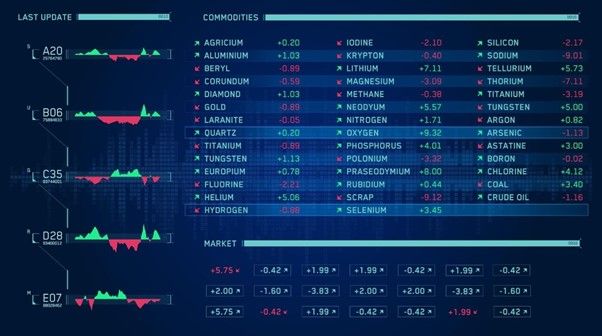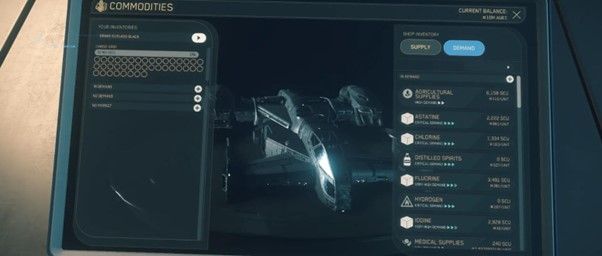With Star Citizen 4.0 comes an equally exciting new feature in the form of a detailed and ever-changing player driven economy that enables engaging in profitable trade. Just as the Star Citizen universe is expanding so are its economies that present both as beneficial prospects and limitations to traders. It is crucial to learn the peculiarities and the advantages of the trading system since the majority of players will mostly make virtual money by trading. This guide will cover the key components in explaining the dynamics of economy and trade in Star Citizen 4.0 while equipping you with necessary skills for the changing environment.
Economy of Star Citizen
The In-game economy of Star citizen does not remain in stagnant form, it is quite an active mechanism that develops based on players’ decisions, market dynamics of supply and demand, and other activities happening in the game. The new feature of server meshing, which eliminates physical server boundaries and transfers players between servers within Star Citizen 4.0, adds much to that framework by representing more interactions from different servers influencing the economy. The prices of various goods in Star Citizen aUEC, the presence of available resources, and the profitability of various trade routes are not constant but change which means that traders should devise Forehand strategies.
Supply
This includes the stock of any given product at a certain location. If the offer becomes too high many sellers will cut their prices in order to attract customers. Suppose because of the latest planet colonization footage, a spaceport depot is filled up with excess medical provisions. In this situation, we can expect medical wares to even be sold at clearance levels.

Demand
This includes the wishes of clients to produce a particular item in a particular area. When demand conditions exist, consumers are often in a position to pay more than the normal price for the targeted piece. For example, a pirate raid can lead to shortages of armaments in a particular system. Thus, it is time to take advantage of selling them reaping additional benefits for the great demand experiencing for these goods.
Understanding Trade Routes
Trade routes are fundamental in the trade system in Star Citizen 4.0. These routes are established between many places in the galaxy where different commodities are available, and where demand shops, and risks vary. Some routes are very old and well used which makes them easy to haul many goods for sale while others are risky trough market forces but if you are able to brave the risks, the pays are high. In the present age of traders, there are the best trade routes that can be traced via word of mouth by following market trends, tracking stock levels and shortages and to some extent, knowing the possible stock outs like attacks or wars in particular areas.
Key Trading Locations
In the Star Citizen world, the trading activity is concentrated in certain areas. These areas are frequently in short supply of specific products or contain specific goods that can be exported and make profits. For instance, ArcCorp and Hurston are big marketplaces that you can acquire raw and finished products at low price comparative to what they can be sold in markets where there are no such products. Conversely, some outposts within the Stanton system can also sell some of the items or materials that are not found in other places hence making them good trading points.
Tools of the Trade
Galactic News Network (GNN)
It is important to know which events are likely to trigger certain markets to be active. Some GNN reports will make it apparent that there are going to be resource scarcity or trade embargoes, allowing you to make money from all the price movements that will ensue. Now picture a GNN report on a medical emergency threatening a particular planet. In view of this, you know it is the right time to purchase medical supplies because there is likely going to be a high demand.
Commodity Kiosks
The kiosks are placed at spaceports and other trading hubs making it possible for the traders to get constant access to information regarding the prices of various goods and services on a galaxy. So first of all buy Star Citizen aUEC and then locate Price discrepancies maximum geographical arbitrage opportunities to buy low and sell high in different markets. Imagine standing at a commodity kiosk in a frontier system, trying to compare the price of a certain resource with that of a core system. When the difference is large enough, purchase in the frontier system at the lower price and move to core system and sell it at a higher price to maximize profit.

Community Hubs
There are virtual societies formed based on the trade of Star Citizen and they might prove ot be useful in intensive information gathering. Veteran traders are always willing to offer some of the critical information that can help shape a market, including what goods are in demand and when there is likely to be a shortage, or even speculation about specific goods that you may wish to use yourself.
Haggling
This could help you bargain more comfortably since you understand the forces of demand and supply. It is very easy to get a better deal when one is aware of how certain factors in the market work and the best approach to take in negotiating the price.
Risk Management
Appreciate the risks that are associated with the trading activity. Pirate attempts at hijacking, breakdown of systems, and even bans can result in lost goods and losses. Take some of your finances and buy some insurance and try to avoid insecure trade routes when it’s necessary. Trading is an exciting venture that gives the trader immediate returns in profits; however, one should be responsible and careful of the risks involved. Most of the time, traders are out to chase profits and some form of protection against these unforeseen losses is referred to as insurance. In some instances, planning for risk can also include choosing safe traveling routes to avoid pirate attacks or other such perils.
Conclusion
Opening up individual trade routes, understanding the dynamics of the market, and using the appropriate tools allow one to sail through the complicated ecosystem of Star Citizen and establish a successful trading business. If you’re an experienced player or a rookie in the universe, this guide is what is needed so that you will be able to make it in the world of Star Citizen trading.


 by Symphonie
by Symphonie